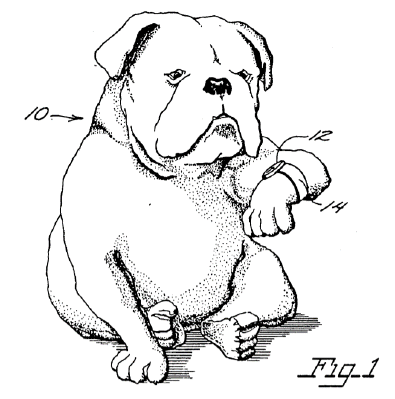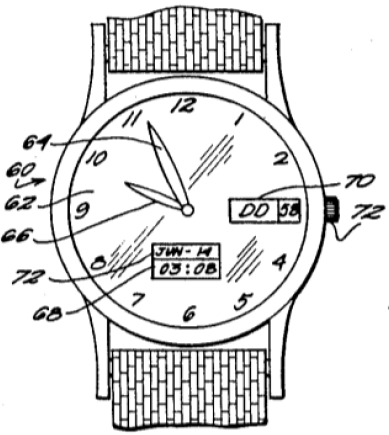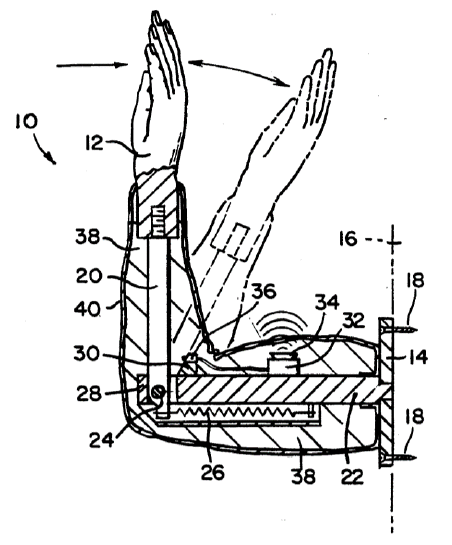
Watches, clocks, and the like keep track of the passage of time on a human scale, or in terms of human time. A day, a minute, a second have value to a human being in terms of the lifetime of a man; a week has a greater value than a day; a year, a greater value still. Humans schedule their activities with these values in mind.
Animals, such as dogs, live shorter lives as measured by human time than people. A dog that lives ten years has lived a full life; a man might live 77 years to live a full life. The relationship between the lifetimes of humans and dogs can be related by stating a period of time in "dog years." Two human years is fourteen "dog years." Although this relationship might perhaps be helpful in determining whether a dog or other animal is full grown or not, it does little to help the owner of a pet put the proper value on the animal's time.
Various animals have different lifetimes. For example, seahorses and rats live an average of three human years; pigeons live three and one-half years; goldfish and hamsters live five human years; hogs, 9 years; dogs, 11 years; cats, 18 years, beavers, 12 years; lobsters, 15 years; bats, lions, and horses live 20 years; dolphins live 25 years; brown bears live 47 years and polar bears live 33 years; gorillas live 45 years; alligators, 50 years; elephants, 60 years; and giant tortoises, 100 years. All of these have a corresponding multiple to relate to them to human time.
According to its major aspects, the present invention is a watch, clock or the like made to run at a time different than human time, such as a multiple of human time to correspond to the ratio of "animal years" per "human year". The number of animal years per human year ratio is derived from the ratio of the lifetime of a human being to the lifetime of that particular animal, in the same units. For example a dog lives about 11 years while a human lives about 77 years; therefore, the ratio is seven.
The watch comprises a housing containing a timing means for keeping time at a rate different than human time and a means for displaying the time at that different rate. The display would preferably show the standard twelve hour analog display with the hands revolving, say, seven times faster for dog time so that seven "dog days" would elapse in the time it takes for one "human day."
Further, the date would also be displayed with a designation of "Dog Day" followed by the number of dog days elapsed during the dog year so that the human date of June 14th (at about 9:00 AM) would be displayed as DOG DAY 56th (8:00 AM) in "dog" time.

It is a feature of the present invention that the rate of time, as it is perceived by humans will have the appropriate value for the animal to which the rate corresponds. If the watch is set for dog time, the hands will move about the watch face seven times faster than the rate of human time. The advantage of this feature is that the value to the animal of the duration of the activity in which the animal is engaged at its owner's pleasure will be put into perspective. If a dog is kept locked in the basement of a house during an eight or nine hour day, for example, while its owner is away, the elapsed time on the dog watch will be 56 to 63 hours, or approximately two and one-half days. A one-hour ride in an automobile will register seven hours on a dog watch. Thus the value in dog time of a human activity will become quickly apparent.
Another advantage of this feature is that the appearance of hands moving about a watch face at a rate seven times faster than expected has an unexpectedly comic effect. This comic effect can be taken advantage of by using the watch as an official time piece for a potentially dull meeting.
Well my friends, time flies when you’re having fun. Indeed you’ve spent one hour reading this article.
Oh wait! My mistake, I was looking at my Dog Clock.
Ok guys, next time we'll take a look at this patent:

See you soon!
- Archimedex
Huh, very interesting. Though possibly quite depressing, if you look at the watch and see the lifetime of your pet passing by so quickly.
Also: That teaser for the next patent really looks like a "high-five-machine". Like, a hand that automatically gives you a high-five.
Also: If you write articles like these, be sure to include a source to the patent and add the steemstem tag. @steemstem is a community that seeks to share and improve STEM related content on steemit. Check them out, I think you might be interested.
Ahah you're the man ;) That's exactly a high-five machine, you ruined my surprise! No more teaser from next time!
Also, thanks for your good advices! I appreciate that.
Wow, I didn't expect to actually be right. I'll shut up next time then. ^^
Hi! I am a robot. I just upvoted you! I found similar content that readers might be interested in:
https://www.google.com/patents/US5023850
Hi robot! Indeed it is the patent in the title :)
The oldest dog on record – a Queensland Heeler named Bluey – was 29 years, 5 months old.
Hem... ok! That's interesting!
Fun but useless considering time is a human construct lol